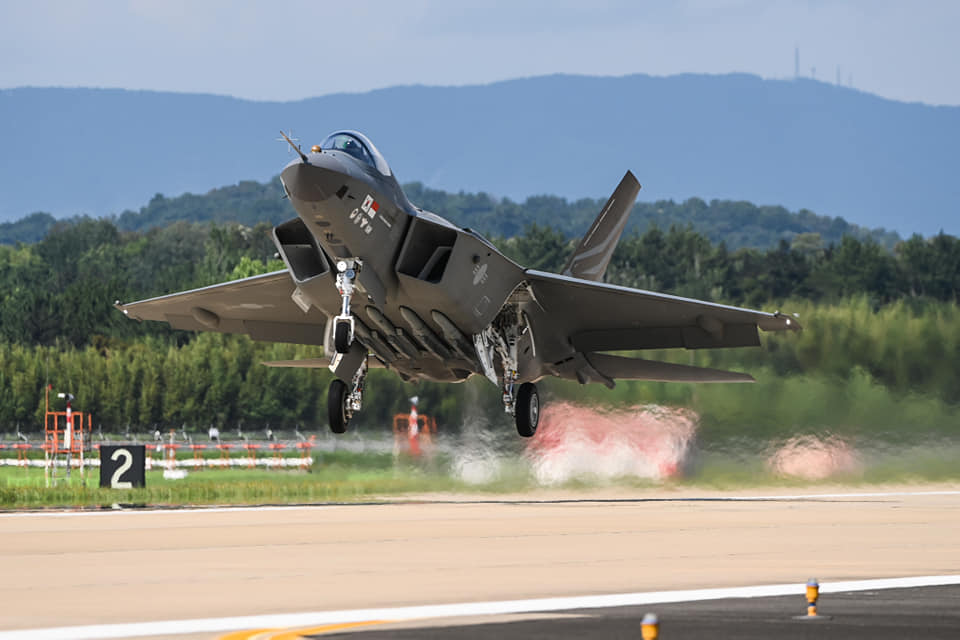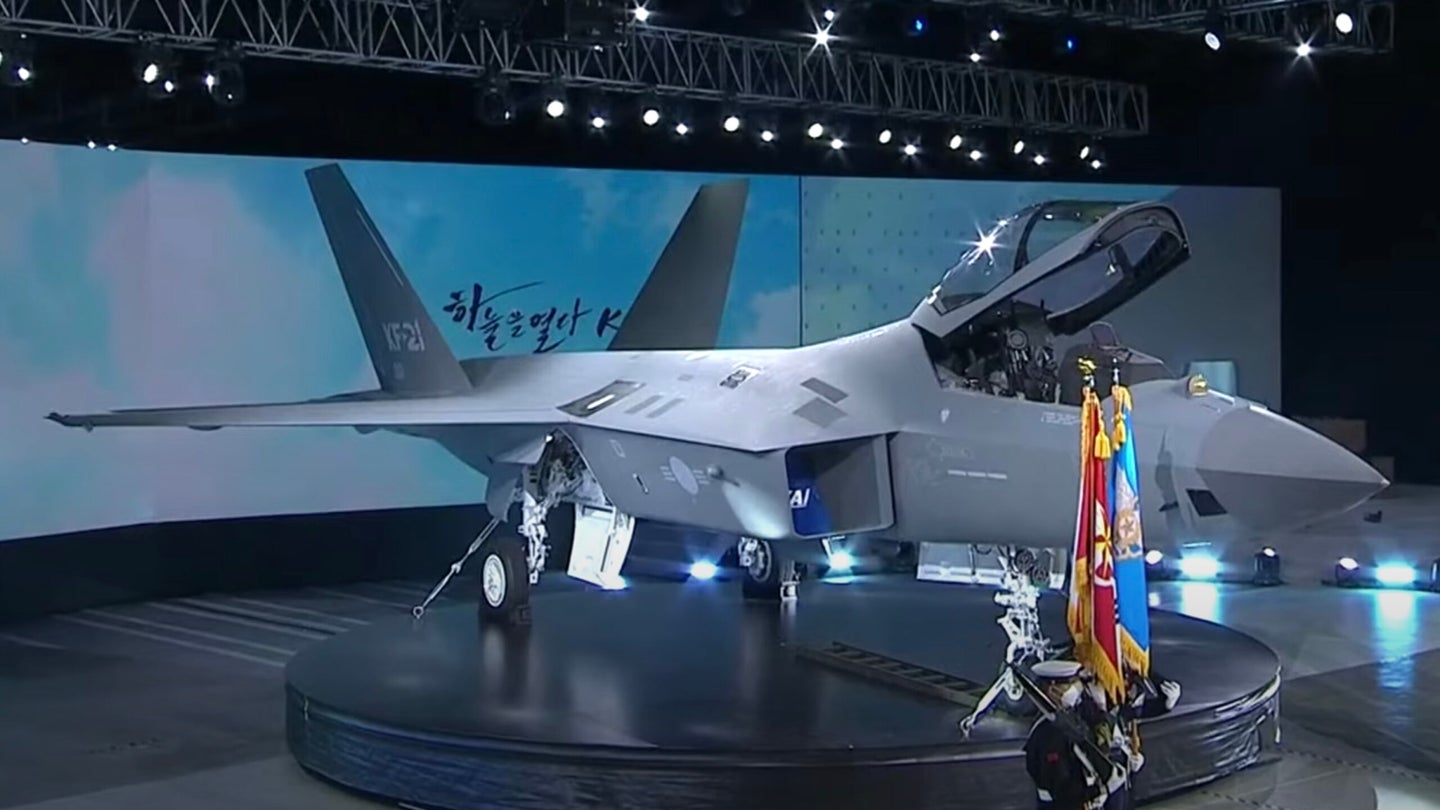Asian KF-21 Boramae vs. Su-75 Checkmate – What Are The Differences
A noticeable difference between the KF-21 and the Russian Checkmate is that the first has two engines at once with a total thrust of up to 20,000 kg.
(DEFENCE SECURITY ASIA) — The South Korean novelty is capable of carrying American, European, and Korean-built air-to-air missiles, as well as air-to-ground missiles, bombs, and anti-ship missiles at ten suspension points. The total payload weight reaches 7,700 kg.
The Boramae isn’t exactly a stealth plane, but it uses several elements to reduce radar visibility. It is known that it will be equipped with a radar station with an active phased antenna array.
A noticeable difference between the KF-21 and the Russian Checkmate is that the first has two engines at once with a total thrust of up to 20,000 kg. According to Armádní Zpravodaj, these are General Electric F414 engines. The same is in the American “Hornets” – F-18 Super Hornet.
The KF-21 fighter will be delivered in single and double configurations. In the future, the export of KF-21 Boramae is planned, especially to the countries of Southeast Asia, which have good trade relations with South Korea.
As for the domestic Checkmate, it was presented at the MAKS-2021 air show by the United Aircraft Corporation [part of the Rostec state corporation]. Su-75 Checkmate has the following flight characteristics: flight range without suspended tanks – about 3,000 km, combat radius – 1,500 km, service ceiling – 16.5 km, maximum speed – 1.8-2 Mach.

According to the General Director of the United Aircraft Corporation Yuri Slyusar, the Checkmate light tactical aircraft [LTS] is a multifunctional platform of a new generation, which is distinguished by the ability to adapt to the needs of a specific customer, low operating costs, and broad combat capabilities.
Why was the Su-75 shown right now?
The story with the LTS project began in the 2000s. Then several Russian firms, including RSK MiG and OKB Sukhoi, tried to enter the international market at once. However, it was difficult to do this with the help of fourth-generation vehicles – the competition with foreign fighters turned out to be too high. Now the situation is fundamentally different: foreign fifth-generation fighters, including the Turkish TF-X, the Korean KAI KF-X, the British Tempest, are at the design stage and will not take off soon.
The only flying fighter (conditionally) of the fifth generation that can enter the markets is the Chinese J-20. However, this machine is used by the PLA Air Force only domestically and will not be exported shortly. The Russian Su-75, unlike other aircraft, will be ready as soon as possible: the aircraft will make its first flight in a year, and several sources claim that the prototype technology demonstrator has already performed test flights from the runway of the Sukhoi plant in Komsomolsk-on. – Cupid. The installation batch of these machines can be ready by 2025, and mass production can begin in 2026.
One of the main qualities of the new fighter is its price. At $ 25-30 million, the Su-75 will be able to overtake all existing machines in terms of attractiveness – the French Dassault Rafale [90 million euros], the American F-35 [90 million dollars], and the modern F-16V Block 70/72 [60 million dollars]. The new “chess horse” will be able to oust the Russian Su-30 [$ 80 million] and Su-35 [$ 92 million] fighters from the market, and in the next 10-15 years may turn into the main export fighter of Russian production. At least until the export version of the heavy Su-57 is ready.

What will a potential buyer of the Su-75 get for $ 25-30 million? First, full unification with the “older” version – the Su-57 fighter. The entire pilot training system, digital cockpit, and main components are designed to maximize the cost of ownership. For the same purposes, the “junior” fighter will receive a built-in neural network. She will be able to diagnose the vehicle before and after the flight, and in battle will take over piloting the vehicle, leaving the pilot the opportunity to use weapons intelligently.
The new aircraft does not have the task of achieving total air superiority, but a link of several versions of fighters is quite capable of clearing the front with the same efficiency as that of heavy fighters.
Secondly, a modern engine. Only one fighter in the world, the American F-35, is now endowed with the possibility of a long flight at supersonic without an afterburner. The Izdeliye-30 engine, which was being finalized for use in heavy Su-57s, is already ready and the new machine will come in handy. With it, a light tactical aircraft will be able to reach the point of use of weapons much faster than any other domestic-made machine.

But in terms of armament, the LTS will become the first fighter in the history of Russian aviation with a completely new guidance system. The “mirrors” located under the fighter’s fuselage will allow aiming at a wide-angle – the exact characteristics of this system will be revealed later, but it is known that thanks to it the Su-75 will be able to “shoot backward”, that is, launch missiles in the direction opposite to the direction of flight. Up to five air-to-air missiles in internal compartments or ultra-long-range missiles of the same class can be used to destroy enemy aircraft. The radar station deserves special attention. The first production fighters will be equipped with an export version of the Russian H036 Belka radar. However, in the future, ROFAR, a photonic phased antenna array, may be available for ordering to domestic videoconferencing systems and foreign customers. Its use can increase the target detection range to 450 kilometers and bring the fighter closer to the capabilities of ground-based air defense systems such as the S-400.
To destroy land and sea targets, the fighter will be equipped with a hypersonic cruise missile with a launch range of about 700 kilometers in the next two years. — bulgarianmilitary.com

CLICK HERE TO DOWNLOAD DEFENCE SECURITY ASIA APPS


Comments are closed.